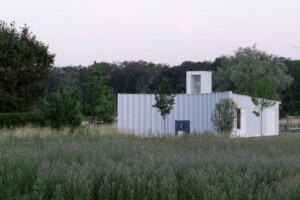While solar panels have become increasingly common, the ones usually found on rooftops and the like can convert at most between 17 and 19 percent of received solar energy to usable electricity. This average yield has plateaued, increasingly only about 3.5 percent since the 2000s. More efficient panels are available, like those used on satellites, but they remain cost prohibitive.
Insolight, a Swiss startup from the École Polytechnique Fédérale de Lausanne (EPFL), claims to have developed a scalable alternative, however. The company’s new technology uses the same high-efficiency cells found in orbiting satellites but assembled in such a way that minimizes cost differences.
Insolight’s Mathieu Ackermann, Laurent Coulot, and Florian Gerlich have constructed arrays of very small versions of these high-efficiency cells, mounted with an optical magnifier that concentrates sunlight around 100 times, resulting in cells that take up less than .5 percent of the panel’s surface area but harvest a much larger percentage of the light hitting the panel.
Most concentrator-operated solar systems require constant maneuvering to be tilted towards the sun. In order to maximize efficiency without requiring new mounting technology or complicated tilting mechanics, each of the cells is detailed so that it can make tiny, millimeter-level movements to position itself to track the sun without all the cost, space, and reliability issues found in many already available concentrator systems. Insolight’s “microtracking” can reportedly capture 100 percent of the light that hits it, regardless of its angle of incidence. The ultra-thin panels can be mounted similarly to any traditional photovoltaic cell, even in a hybrid array layered with standard panels, which is especially useful for cloudy days.
The panels spent a year on the roofs of an EPFL pilot site and worked “without a hitch,” according to the trio.
In addition to the obvious environmental benefits, Insolight projects that the panels could cut electricity bills by as much as 30 percent, as well as provide a greater return on investment than other commercially-available solar options. The company hopes to bring its first products to the market in 2022.
For more on the latest in AEC technology and for information about the upcoming TECH+ conference, visit techplusexpo.com/nyc/.











